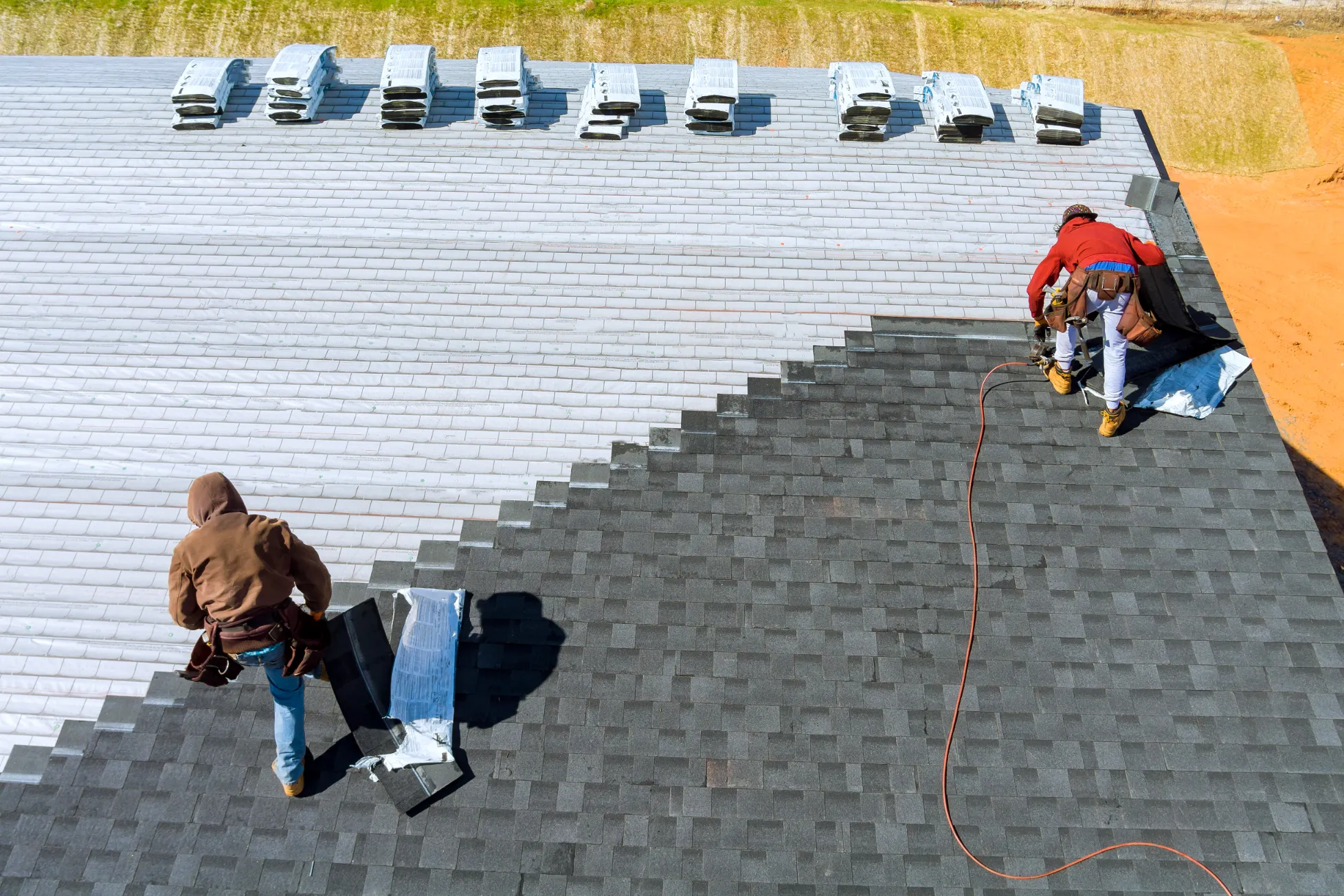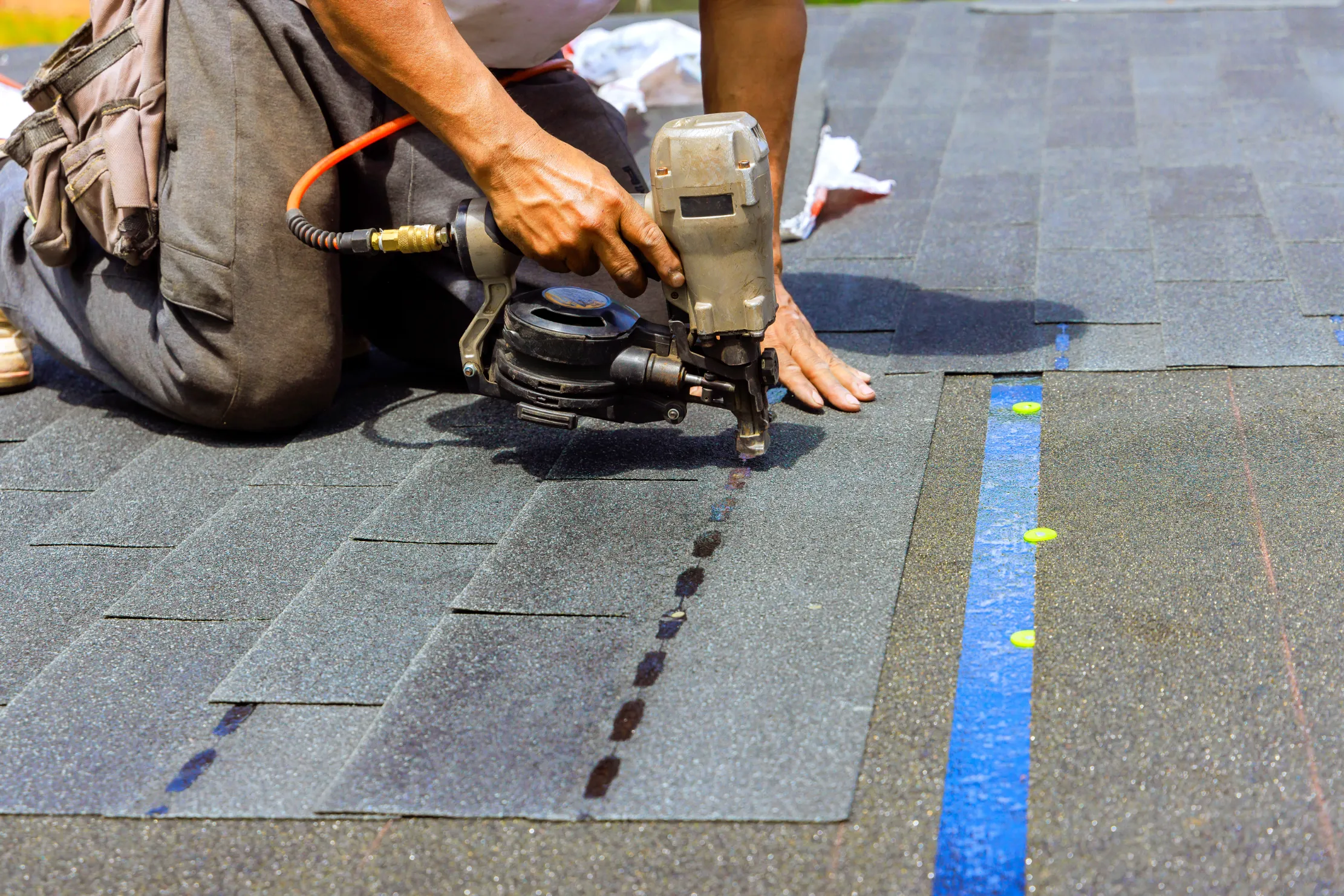A successful shingle roof installation can protect your home for decades—but only if it’s done correctly. Many homeowners unknowingly make mistakes that can reduce roof lifespan, waste materials, and cause expensive repairs later on. Learning about these errors before your next roofing project helps ensure long-lasting results.
Improper Roof Deck Preparation
Every shingle roof installation starts with the roof deck. If this step is rushed or overlooked, problems can appear within months. The roof deck must be dry, smooth, and securely nailed. Even a slightly warped or rotted board can compromise the shingles above it.
A common mistake is ignoring ventilation and underlayment. Without proper airflow and a moisture barrier, shingles can curl, buckle, or trap heat—shortening their lifespan. Before installation begins, always confirm that your roofer inspects and repairs the deck thoroughly.
Image Suggestion: Horizontal image showing a roofing contractor checking roof decking before laying shingles.

Incorrect Nailing Techniques
Improper nailing is one of the leading causes of early roof failure. During shingle roof installation, nails must be placed precisely in the manufacturer’s nailing strip. Nails that are overdriven, underdriven, or off-center can cause shingles to loosen or lift during strong winds.
Using the wrong nail length or failing to adjust pressure on an air gun can also lead to leaks and poor wind resistance. The solution? Hire a certified roofing company with trained installers who follow best practices and manufacturer guidelines.
Image Suggestion: Roofer carefully nailing shingles with a pneumatic nail gun.

Poor Alignment and Overlapping
A roof’s appearance and performance depend on accurate alignment. Uneven rows, misaligned overlaps, or gaps between shingles create weak points where water can seep in. Poorly aligned shingles also affect curb appeal, making your roof look uneven and unprofessional.
During your shingle roof installation, your roofer should use chalk lines and follow a consistent pattern. This ensures every shingle overlaps correctly, providing solid protection and a clean, uniform finish.
Ignoring Roof Flashing and Valleys
Flashing and valleys are the most leak-prone areas of a roof. Many contractors cut corners here, leading to water infiltration and hidden damage. When performing shingle roof installation, flashing must be properly sealed and layered beneath the shingles, especially around chimneys, skylights, and vents.
Failing to replace old or corroded flashing during installation often leads to costly leaks later. Homeowners should request a complete flashing inspection before any new shingles are laid.
Image Suggestion: Roofer sealing metal flashing along the roof valley with shingles nearby.
Skipping a Professional Inspection
Even if your roof looks perfect from the ground, unseen issues may still exist. After a shingle roof installation, it’s wise to schedule a final inspection by a professional roofer or certified inspector. They can verify correct shingle placement, secure flashing, and confirm proper ventilation.
Skipping this step could mean missing problems that void warranties or lead to early roof replacement.
Final Thoughts
Avoiding these shingle roof installation mistakes protects your investment and ensures your home stays secure through all seasons. Taking time to hire skilled roofers, using quality materials, and following correct installation methods make all the difference.
Contact Antar Roofing for expert roofing services—from roof installation to roof repairs. To stay informed about maintenance and care, dive into our blog for helpful tips and insights.